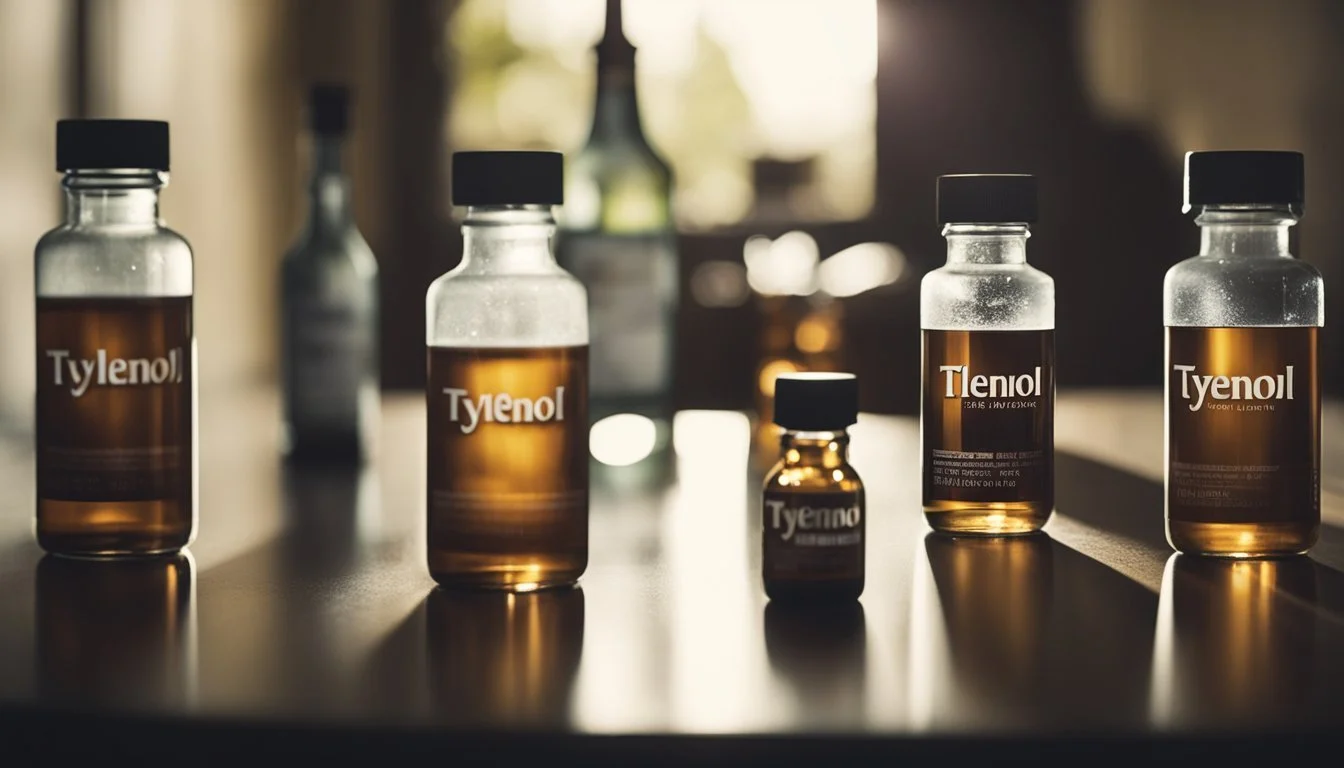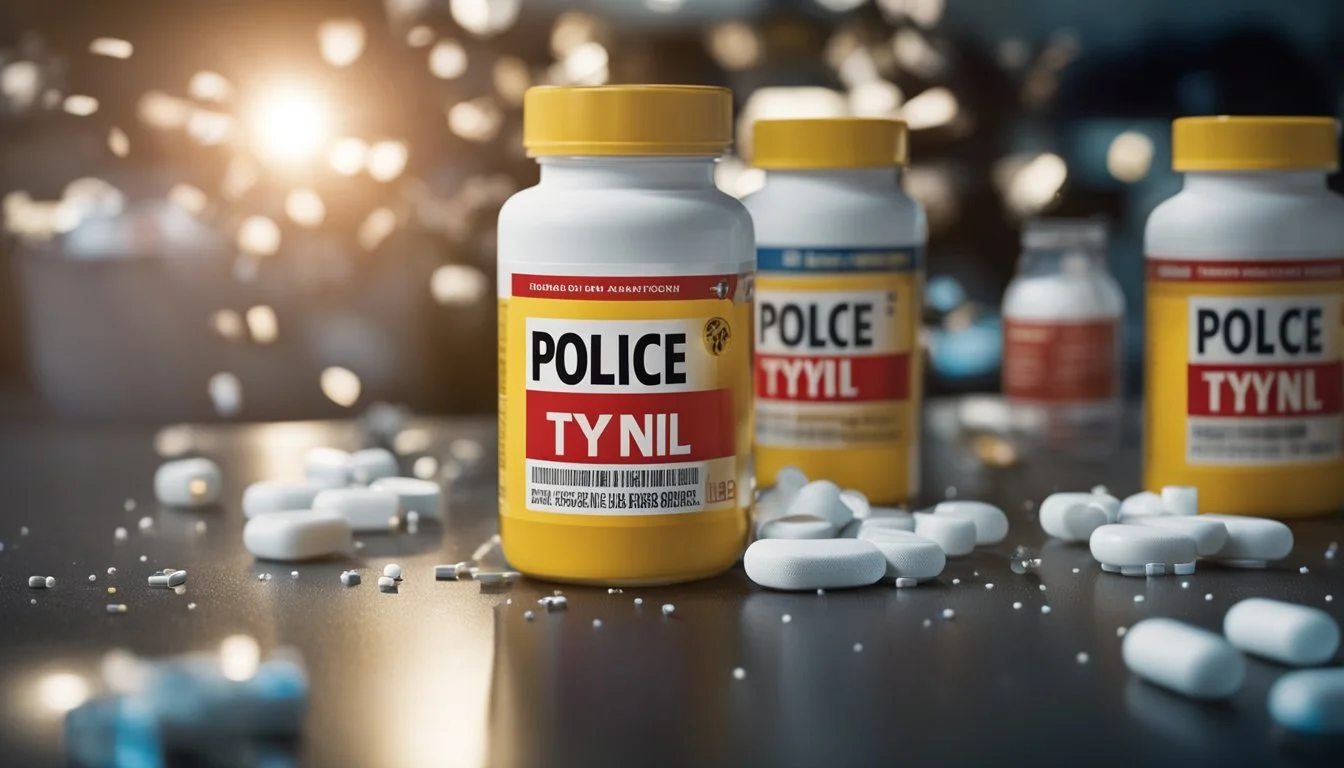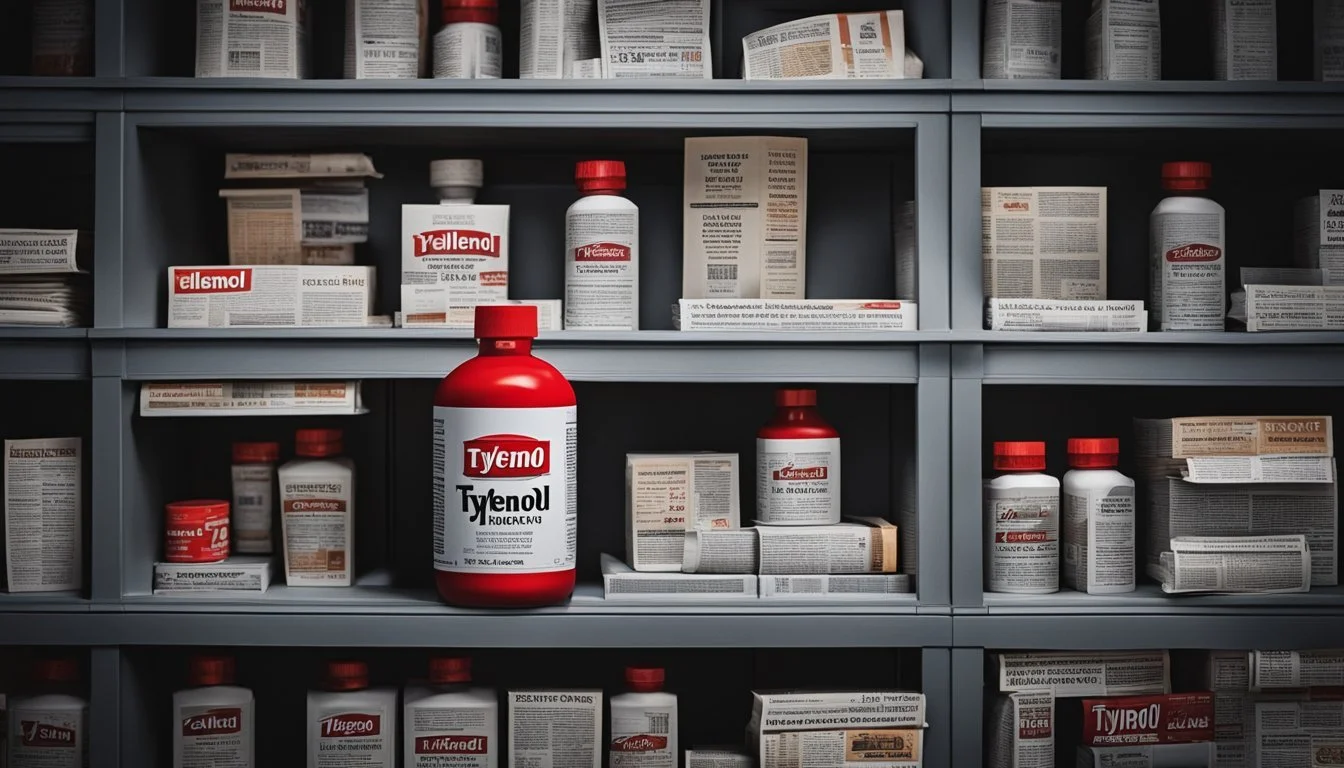Lethal Medicine: Documentaries Unravel the Tylenol Poisoning Mystery
The Tylenol poisonings of 1982 shocked the nation and forever changed pharmaceutical safety standards. This tragic event, where seven people in the Chicago area died after taking cyanide-laced Tylenol capsules, has been the subject of numerous documentaries over the years.
These films explore the investigation, its impact on society, and the enduring mystery surrounding the unsolved case. Documentaries about the Tylenol poisonings offer viewers a comprehensive look at one of the most infamous product tampering cases in American history, combining archival footage with interviews from investigators, survivors, and experts. They provide valuable insights into the far-reaching consequences of this event on public safety and consumer protection.
1) What Happened That Night
On September 29, 1982, tragedy struck in the Chicago area. Mary Kellerman, a 12-year-old girl, took Tylenol for a cold and died shortly after. Within hours, six more people lost their lives.
Adam Janus, a postal worker, became another victim. His brother and sister-in-law, visiting to console Adam's wife, also took Tylenol from the same bottle. They too succumbed to the poison.
Dr. Thomas Kim at Northwest Community Hospital worked tirelessly through the night to uncover the cause. By 2:45 a.m., he had connected the deaths to Tylenol consumption.
The events of that night triggered a massive investigation and prompted significant changes in medication packaging. The Tylenol murders remain one of the most infamous unsolved criminal cases in American history.
More information on the Tylenol murders
2) Tampered Pain Relievers
The Tylenol poisonings of 1982 involved the deliberate contamination of Extra-Strength Tylenol capsules with potassium cyanide. Seven people in the Chicago area died after consuming these tampered pain relievers.
The victims ranged in age from 12 to 35 years old. Mary Kellerman, the youngest victim, took Tylenol to relieve cold symptoms. Adam Janus and two of his relatives also fell victim to the poisoned capsules.
Before the crisis, Tylenol controlled over 35% of the over-the-counter pain reliever market. Within weeks of the murders, this share plummeted to less than 8%. The incident dramatically impacted consumer trust in medication safety.
The poisonings led to significant changes in how medications are packaged and distributed. Tamper-evident seals and packaging became standard practice for over-the-counter drugs. This event reshaped the pharmaceutical industry's approach to product safety.
Despite extensive investigations, the case remains unsolved. The perpetrator was never identified or brought to justice. The Tylenol murders continue to be one of the most infamous unsolved crimes in American history.
3) Deep-Dive Into Crime
The Tylenol poisonings of 1982 have been the subject of several documentaries that examine the criminal aspects of the case. These films delve into the investigation, potential suspects, and lasting impact of the crimes.
"The Tylenol Murders" (2022) explores the extensive police investigation and the challenges faced by law enforcement. It features interviews with detectives who worked on the case and examines the evidence collected. More info
"Bitter Pill: The Tylenol Murders" (2022) focuses on the psychological profile of the unknown perpetrator. The documentary analyzes the motives behind the poisonings and the methods used to tamper with the medication. More info
"Painkiller: The Tylenol Murders" (2023) provides a comprehensive look at the crime scene investigations. It includes reenactments of key events and showcases forensic techniques used in the 1980s. More info
These documentaries highlight the complexity of the case and its impact on product safety regulations. They offer viewers a detailed examination of one of America's most notorious unsolved crimes.
4) Justice for the Victims
The search for justice in the Tylenol poisonings case remains ongoing. Despite extensive investigations, no one has been convicted for the murders that shocked the nation in 1982.
Law enforcement agencies continue to pursue leads and re-examine evidence. The FBI and local police departments have utilized advances in forensic technology to analyze old samples and interview persons of interest.
Several documentaries have explored the pursuit of justice. "The Tylenol Murders" (2022) by ABC News examines the case's impact and ongoing investigation. More info
Netflix's "Painkiller: The Tylenol Murders" (2023) features interviews with victims' families and investigators, highlighting their continued quest for closure. More info
The case's unsolved status has led to renewed public interest. True crime podcasts and television specials regularly revisit the murders, keeping the victims' stories alive and the search for justice in the public eye.
5) Unraveling the Mystery
The Tylenol poisonings of 1982 sparked intense investigations and public interest. Several documentaries have explored this unsolved case over the years.
"The Tylenol Murders" (2000) examined the initial police response and subsequent investigation. It featured interviews with detectives who worked the case and family members of victims. More info
"48 Hours: The Tylenol Murders" (2010) revisited the case, looking at new leads and theories that had emerged in the decades since. The show explored potential suspects and the lasting impact on pharmaceutical safety. More info
"Unsealed: Conspiracy Files - The Tylenol Murders" (2015) delved into various conspiracy theories surrounding the case. It analyzed different motives and suspects proposed over the years. More info
These documentaries have kept public interest alive in the unsolved Tylenol murders, presenting evidence and theories as investigators continue to search for answers.
6) The Aftermath
The Tylenol poisonings prompted significant changes in medication packaging and distribution. Johnson & Johnson, the maker of Tylenol, recalled millions of bottles and introduced triple-seal tamper-resistant packaging.
The Food and Drug Administration mandated tamper-evident packaging for over-the-counter medications in 1983. This new standard became a model for product safety across various industries.
The crisis also revolutionized crisis management practices. Johnson & Johnson's transparent and proactive response became a case study in effective corporate communication during emergencies.
Despite an extensive investigation, the perpetrator was never conclusively identified. The case remains unsolved, sparking ongoing interest and speculation.
The Tylenol murders led to the creation of anti-tampering laws. These regulations made it a federal offense to tamper with consumer products, carrying severe penalties for offenders.
The incident had a lasting impact on public trust in product safety. It heightened consumer awareness and vigilance regarding potential tampering of packaged goods.
7) Public Outcry
The Tylenol poisonings of 1982 sparked widespread fear and anger among the American public. News of the deaths spread quickly, causing panic as people realized their medicine cabinets could contain lethal products.
Consumers demanded immediate action from authorities and manufacturers. Many threw away their Tylenol bottles, while others rushed to hospitals fearing they had taken contaminated pills.
The incident eroded public trust in over-the-counter medications. People questioned the safety of other products and called for stricter regulations on pharmaceutical packaging.
Media coverage intensified the public reaction. Newspapers and TV broadcasts provided constant updates, fueling anxiety and speculation about the perpetrator's motives.
Local and national officials faced pressure to solve the case quickly. The FBI and FDA joined forces with local law enforcement in a highly publicized investigation.
Johnson & Johnson, Tylenol's manufacturer, received both criticism and praise for its response. The company's swift recall of 31 million bottles helped mitigate some public concerns.
Learn more about the Tylenol crisis response
8) Insider Perspectives
Documentaries about the Tylenol poisonings often feature interviews with key figures involved in the case. These provide valuable insider perspectives on the events and investigation.
Former FBI agents who worked on the case offer insights into the complexities of the investigation. Their firsthand accounts reveal challenges faced and investigative techniques used.
Interviews with Johnson & Johnson executives shed light on the company's crisis management approach. They discuss the decision-making process behind the nationwide Tylenol recall.
Family members of victims sometimes share their personal stories in these documentaries. Their emotional testimonies provide a human element to the tragedy.
Pharmacists and medical professionals who dealt with the crisis offer their unique viewpoints. They describe the atmosphere of fear and uncertainty that gripped their communities.
Local law enforcement officers recount their experiences responding to the initial poisoning reports. Their stories highlight the confusion and urgency of the early stages of the crisis.
Source: Tylenol Murders (2022) - IMDb
9) Law Enforcement Efforts
Law enforcement agencies launched an extensive investigation into the Tylenol poisonings. The Chicago Police Department, FBI, and FDA collaborated to track down the perpetrator.
Investigators examined bottles of Tylenol from store shelves and consumers' homes. They discovered that the tainted capsules contained potassium cyanide.
The authorities created a task force dedicated to solving the case. They interviewed hundreds of potential witnesses and followed numerous leads.
Law enforcement officials offered a substantial reward for information leading to an arrest. The case garnered national attention, prompting increased security measures in pharmaceutical production.
Despite their efforts, investigators were unable to identify the person responsible for the poisonings. The case remains unsolved to this day, though authorities have pursued several suspects over the years.
The Tylenol murders led to significant changes in medication packaging. Tamper-evident seals became standard practice across the pharmaceutical industry as a result of this case.
10) Pharmaceutical Impact
The 1982 Tylenol poisonings had a profound effect on the pharmaceutical industry. Drug companies implemented tamper-evident packaging to protect consumers. This included sealed bottles, foil coverings, and shrink-wrapped outer packaging.
The Food and Drug Administration (FDA) issued new regulations requiring tamper-resistant packaging for over-the-counter medications. These rules became effective in 1989, mandating specific safety measures for drug manufacturers.
Johnson & Johnson, Tylenol's parent company, introduced triple-sealed bottles. This move set a new standard for medication safety and helped restore consumer confidence in their products.
The incident led to increased security measures throughout the pharmaceutical supply chain. Companies enhanced their quality control processes and implemented stricter monitoring of production and distribution channels.
The Tylenol crisis also prompted the development of caplets as an alternative to capsules. These solid tablets were more difficult to tamper with, providing an added layer of safety for consumers.
Overview of Tylenol Poisonings (1982)
The Tylenol poisonings of 1982 shocked the nation and transformed medication safety practices. Seven people in the Chicago area died after taking cyanide-laced Tylenol capsules, sparking widespread panic and a massive product recall.
Historical Context
In the early 1980s, Tylenol was a trusted over-the-counter pain reliever found in many American households. Johnson & Johnson, the parent company of Tylenol manufacturer McNeil Consumer Products, had built a strong reputation for quality and safety.
The United States was experiencing economic challenges, with high unemployment and inflation rates. Crime rates were also on the rise in many urban areas.
Initial Discovery
On September 29, 1982, 12-year-old Mary Kellerman became the first victim of the Tylenol poisonings. Her parents had given her an extra-strength Tylenol capsule for cold symptoms. Hours later, they found her dead on the bathroom floor.
That same day, Adam Janus, a 27-year-old postal worker, died after taking Tylenol. His brother and sister-in-law also fell victim after taking pills from the same bottle while mourning his death.
Investigators quickly linked these deaths to Tylenol consumption. They discovered that the capsules had been laced with potassium cyanide, a deadly poison.
Investigation and Response
The Tylenol poisonings triggered an extensive investigation and led to sweeping changes in medication packaging. Law enforcement agencies worked tirelessly to identify the perpetrator, while pharmaceutical companies rapidly developed tamper-evident packaging to prevent future incidents.
Law Enforcement Actions
The Chicago Police Department, FBI, and FDA launched a joint investigation into the Tylenol murders. Authorities conducted extensive interviews and collected evidence from crime scenes. They examined over 20,000 bottles of Tylenol for contamination. A task force of over 100 investigators was assembled to track down leads.
The police offered a $100,000 reward for information leading to an arrest. Despite their efforts, no suspects were ever charged with the murders. The case remains unsolved to this day.
Changes in Packaging
Johnson & Johnson, Tylenol's manufacturer, responded swiftly to the crisis. They recalled 31 million bottles of Tylenol capsules from store shelves nationwide. This recall cost the company over $100 million.
The incident spurred the development of tamper-resistant packaging for over-the-counter medications. New safety measures included:
Foil seals over bottle openings
Plastic shrink wrap around bottle caps
Childproof safety caps
Blister packs for individual pills
These innovations became industry standard and were mandated by the FDA in 1989. The Tylenol murders fundamentally changed how medications are packaged and distributed in the United States.
Impact and Legacy
The 1982 Tylenol poisonings had far-reaching consequences for public health and safety regulations. They also sparked intense media scrutiny and changed how pharmaceutical companies approach product security.
Public Health Reforms
The Tylenol murders prompted swift action from regulators and manufacturers. Within months, tamper-evident packaging became the new standard for over-the-counter medications. The FDA mandated sealed bottles and boxes with indicators to show if they had been opened.
Pharmaceutical companies redesigned their products to be more secure. Many switched from capsules to solid tablets, which are harder to tamper with. Johnson & Johnson introduced triple-sealed packaging for Tylenol.
These changes spread to other industries. Tamper-evident seals became common on food products and cosmetics. The incident highlighted the need for better safety measures across consumer goods.
Media Coverage
The Tylenol poisonings dominated news headlines for months. Media outlets provided extensive coverage of the investigation and its impacts. This intense scrutiny kept public attention focused on product safety issues.
Documentaries and news specials examined the case in detail. They explored the challenges of the investigation and the broader implications for consumer protection. The media coverage helped drive public demand for increased safety measures.
The incident became a case study in crisis management. Johnson & Johnson's response, including their quick product recall, was widely praised. Their handling of the situation is still taught in business schools today.





